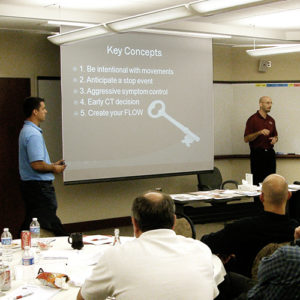The Worst Call to Hear

Of all the cases we see, a pediatric SIDS death is without question the most difficult to bear. I recently cared for a child who a few hours earlier was a happy and playful infant and now arrived in cardiac arrest, pale and lifeless. Despite our usual resuscitative efforts, the child did not survive. In reality, when the medics were called out the child was likely already gone.
So we did what we do. We gave the EPI, performed CPR, felt for a pulse and prayed knowing the outcome was not likely to be a good one. As I looked around the room you could see the faces of the team all thinking similar thoughts. For those of us with children, the thought was this could be my child. For those not used to seeing this type of code it was the confusion on their faces and disbelief that a normal child could die so suddenly.
I walked out to speak with the mom during the code and told her things were not going well. I asked her if she wanted to be present while we continued the resuscitation and be there even if we were not successful. There are some who say yes and others who can’t bear to see their child in this condition. I respect their wishes, whatever they may be, and in this case she sat outside the room crying in a chair as we continued on the other side of the curtain.
When nothing else was left to be done, the efforts were called and the child pronounced. I walked outside the room and knelt by the mother. At that point she knew the outcome and it was important to say the words in order to give her that definitive answer. I’m sorry, your child has died.
It’s easy to forget the humanity of what we do as care givers. It’s easy to become calloused because of the self-abuse, the interpersonal violence we see, and the unwillingness of a small part of the population to assume some responsibility for their own health. It’s easy to become jaded when society makes us the drunk tank, the community crisis center and the addiction treatment center and then turns around and points a collective finger at emergency medicine for being a high cost of care center and place of unnecessary visits.
Those of us who have done this job for any period of time know we are better than that. We pick up a chart, walk in a room and try (despite the distractions of some patients, the RVUs per hour, satisfaction scores, core measures, EMR chart completions, sepsis goals and throughput metrics) to remember that what this profession comes down to is an interaction between a patient, family and a provider.
There was nothing I could offer to this child who just died but a silent prayer. There was little I could give to this grieving mother other than the emotion of knowing that we were so sorry for her loss and the grief she had endured and would endure going forward.
We have wonderful ways to help patients and amazing diagnostic and therapeutic tools at our fingertips. It is startling to see all the things we can do to make an impact on a person’s life. If we do all that and don’t find some way to continue to inject the humanity into our interactions, then we will never be healers to our patients.
That responsibility is not only ours as practitioners, it is ours as a company. The challenge before us is how we continue to value the humanity of the interactions as much as the throughput metrics and quality targets. In some ways it is a David and Goliath battle. There is a sense that the only thing that matters is what we can measure. There is some truth to that. We will only be successful if we appropriately manage our resources and provide value to the health care system.
And yet what will set us apart from other groups is our continued focus and value we place on that interaction at the bedside. If we can honor that part of our calling, then we will have built a legacy which will be talked about for generations to come. For myself that is a challenge worth meeting.

